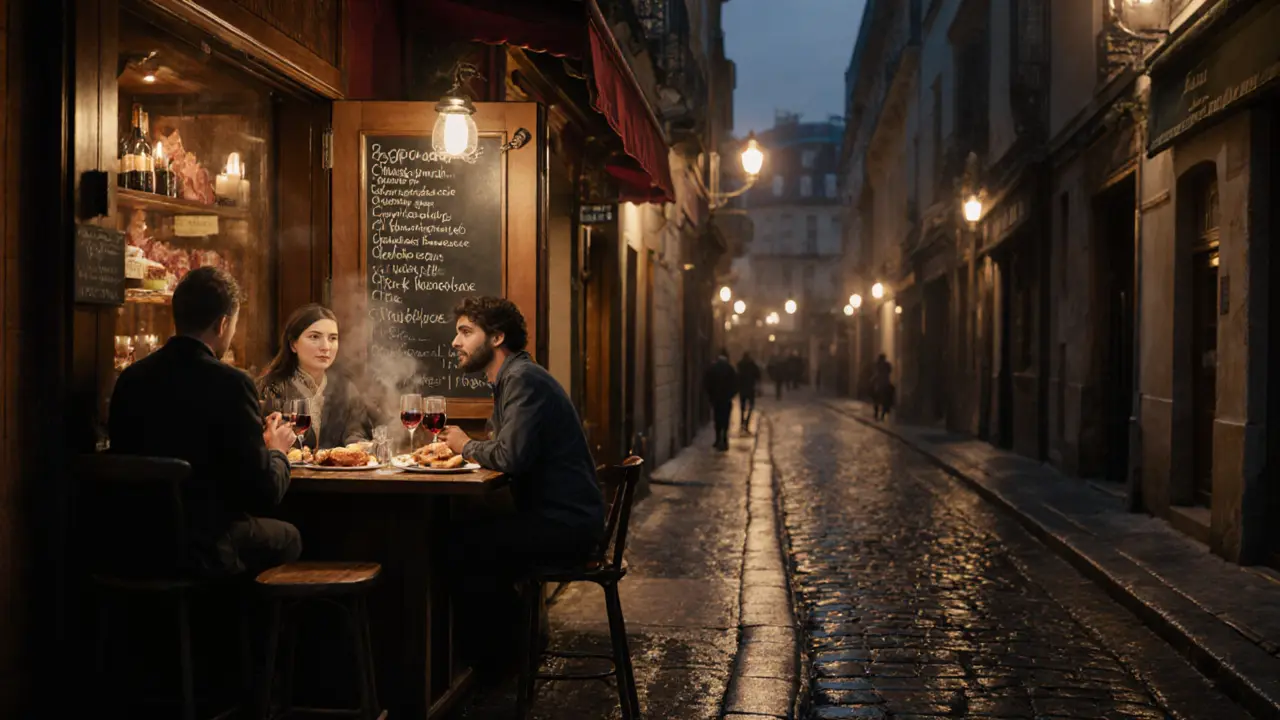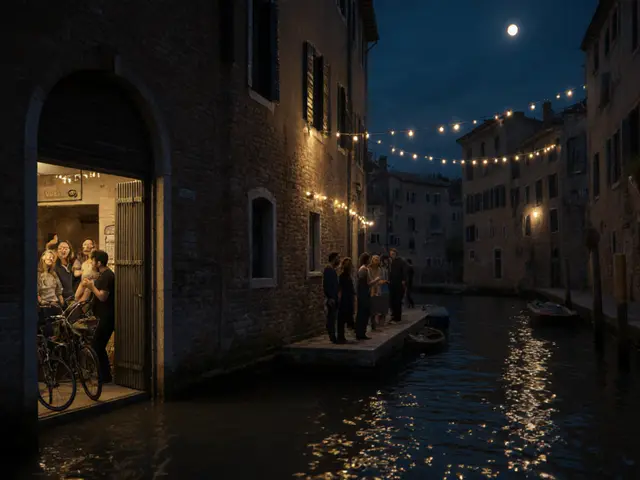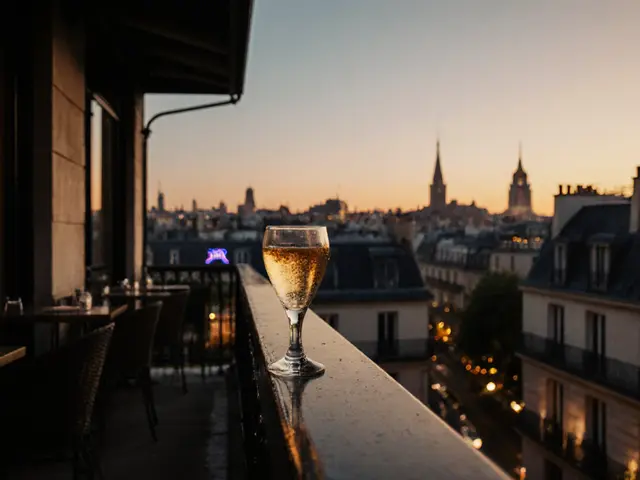Paris doesn’t sleep when the sun goes down-it just changes menus.
Most visitors think of Paris as croissants at dawn, museum visits at noon, and wine at sunset. But the real soul of the city wakes up after 10 p.m. The streets still hum with conversation, the scent of garlic and seared beef drifts from open kitchen doors, and the clink of glasses echoes down alleyways where tourists rarely wander. This isn’t just about drinking. It’s about eating-properly, passionately, and often until the baker starts prepping for tomorrow’s bread.
If you’ve ever stood outside a closed bistro at 11:30 p.m. wondering where to eat, you’re not alone. Paris has rules. Not written ones, but the kind you learn from locals, from the waiter who nods when you ask for a last bottle of Beaujolais, from the chef who pulls out a plate of charcuterie just because you looked tired. This is how you find real Paris after dark.
Where to eat after midnight (and how to know you’re in the right spot)
Not every place with a light on is open. Many restaurants close at 10, even in the 10th or 11th arrondissement. But there are places that stay open for the night owls, the post-theater crowd, the insomniacs, and the people who just want a perfect sandwich at 2 a.m.
Look for these signs: a line of locals standing outside, a chalkboard with handwritten specials, a menu that includes things like croque-monsieur, petits farcis, or escalope de veau. If the staff is wearing aprons and not suits, you’re in the right place. Tourist traps have menus in five languages. Real spots have one-French-and they don’t care if you don’t understand it.
Start in the Marais. At Le Comptoir du Relais, you can sit at the counter, order a glass of natural wine, and get a plate of duck confit that’s been slow-cooked for 12 hours. The chef, Yves, has been doing this since 1998. He doesn’t take reservations after 10 p.m. You just show up. If the bar is full, wait. It’s worth it.
Head to Le Baratin in the 20th. It’s tiny, no website, no English menu. The wine list is scribbled on a napkin. But the octopus with smoked paprika? It’s the best in the city. And the owner, Sophie, will tell you exactly which bottle to pick based on what you’re eating. No fluff. Just truth.
The secret world of Parisian midnight snacks
Parisians don’t eat pizza at midnight. They eat crêpes, galettes, and chouquettes.
At Crêperie Brocéliande in Montmartre, the line snakes out the door at 1 a.m. on weekends. The batter is made fresh every hour. The butter is salted, the sugar is coarse, and the lemon is freshly squeezed. You can get one with ham and cheese, or one with caramelized apples and a scoop of vanilla ice cream. Both are perfect.
Don’t miss the galette-saucisse stands near the Canal Saint-Martin. A grilled sausage wrapped in a buckwheat pancake, topped with mustard and onions. It’s the working-class answer to fine dining. You eat it standing up, paper napkins in hand, juice dripping down your wrist. No fork needed.
And if you’re craving something sweet, Stohrer on Rue Montorgueil has been baking baba au rhum since 1830. Open until 1 a.m. on Fridays and Saturdays. The rum-soaked cake is dense, warm, and smells like vanilla and caramelized sugar. One bite and you’ll understand why Parisians call it “le réveil du matin”-the morning wake-up-even if it’s still night.
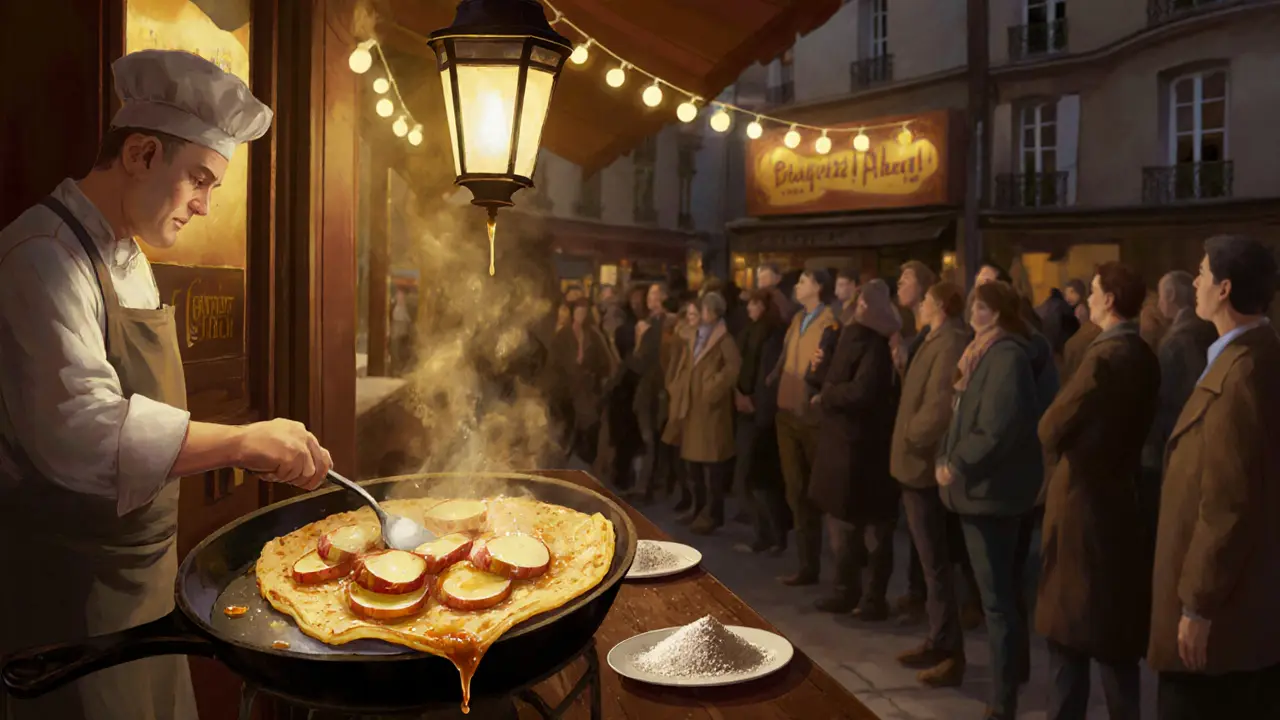
Where the locals drink after dinner
Parisian bars aren’t loud. They’re quiet, intimate, and full of people who’ve been there for years. The best ones don’t have neon signs. They have wooden doors, small windows, and a bell that rings when you walk in.
At Bar à Vin in the 6th, the wine is poured from bottles that have been opened just hours before. The staff knows your name if you come twice. They serve small plates-olives, pickled vegetables, sheep’s cheese-that pair perfectly with a glass of Côte-Rôtie. No cocktails. No music. Just the sound of people talking, laughing, and sipping slowly.
For something different, try Le Chateaubriand in the 11th. It’s a restaurant that turns into a bar after 11 p.m. The cocktails are made with herbs from the rooftop garden. The gin comes from a small producer in Normandy. The bartender, Julien, will ask you what mood you’re in-light and citrusy? Smoky and bitter?-and make you something you didn’t know you wanted.
And if you’re feeling adventurous, head to Le Verre Volé in the 10th. They have over 200 natural wines on the list. No filters. No additives. Just grapes, time, and a little wild yeast. It tastes like earth and rain. You’ll either love it or walk out. Either way, you’ll remember it.
What to avoid (and why)
Don’t go to the Eiffel Tower area for dinner after dark. The restaurants there are overpriced, frozen in time, and serve the same duck confit to 500 people a night. You’ll pay €45 for a plate that costs €12 in Montmartre.
Stay away from places with “Parisian Experience” in the name. They’re designed for Instagram. The food is bland. The service is robotic. The wine is from a box.
And never, ever order a “French 75” unless you’re at a proper bar with a real bartender. Most tourist spots serve it with cheap gin and pre-mixed lemon syrup. A real French 75 uses fresh lemon, real gin, and a touch of sugar. It’s crisp. It’s bright. It’s not a sugar bomb.
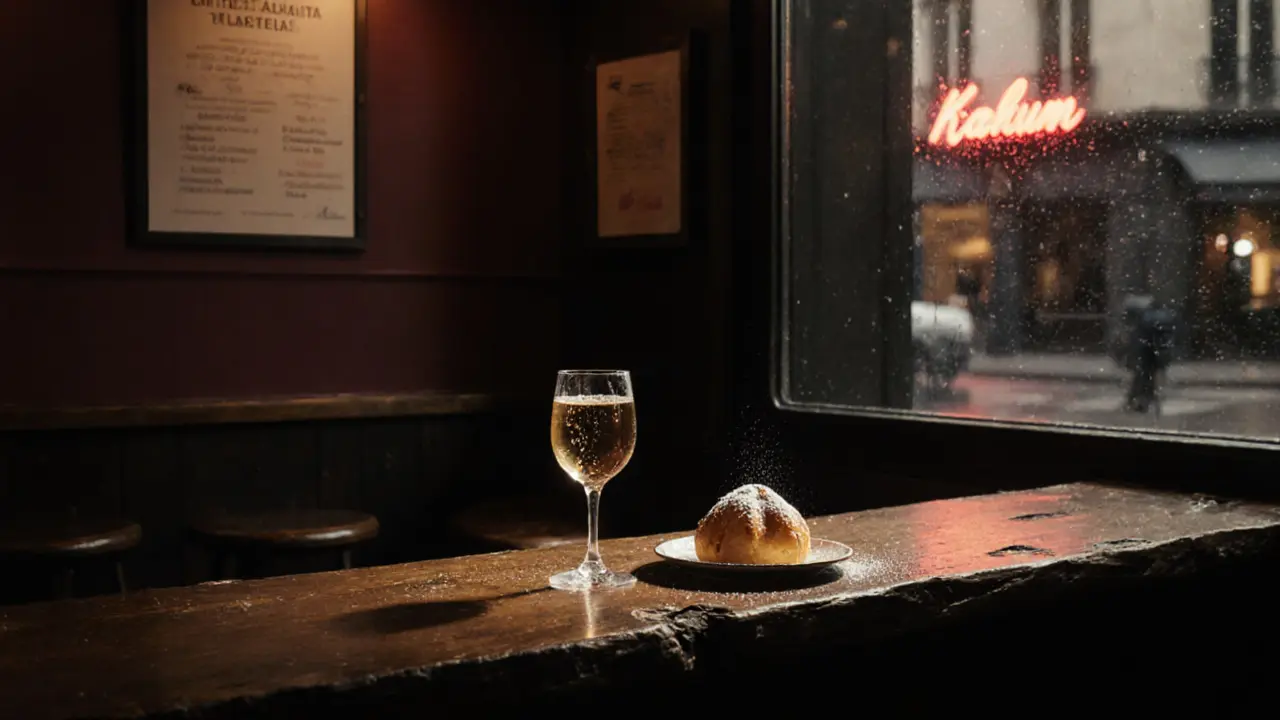
How to plan your night without a map
You don’t need a guidebook. You need to walk. Start around 9 p.m. in the Latin Quarter. Have a glass of wine at a sidewalk café. Then wander. Follow the smell of frying onions. Listen for the sound of French laughter. If you see a place with a full bar and no tourists, go in.
Ask the waiter: “Qu’est-ce que vous mangez ici après minuit?” (What do you eat here after midnight?) They’ll point you to their favorite spot. That’s your next stop.
Paris after dark isn’t about checking off places. It’s about stumbling into the right moment. The one where the wine is cold, the bread is warm, and the person next to you says, “You should try the mackerel.”
When to go and what to wear
Weekends are alive. Tuesdays and Wednesdays are quiet. If you want energy, go Friday or Saturday. If you want intimacy, go midweek.
Dress simply. No suits. No flip-flops. Jeans, a good coat, and comfortable shoes. Parisians dress for comfort, not for photos. You’ll be walking. You’ll be standing. You’ll be leaning over a bar counter. Look like you belong, not like you’re on vacation.
What you’ll remember
You won’t remember the Eiffel Tower lit up. You’ll remember the old man at the corner bistro who gave you a free shot of Chartreuse because you said you’d never tried it. You’ll remember the smell of fresh baguettes at 3 a.m. from the bakery on Rue de la Roquette. You’ll remember the silence after the last glass is poured, the way the streetlights glow on wet cobblestones, and how, for a moment, you felt like you were part of something that’s been going on for centuries.
That’s Paris by night. Not the postcards. Not the tours. The real thing. The food. The wine. The quiet. The people who never sleep, but always make room for you.
What time do restaurants close in Paris?
Most restaurants close by 10 or 11 p.m., but a few stay open until 2 a.m., especially in the Marais, Montmartre, and the 11th arrondissement. Look for places with a chalkboard menu or a line of locals-those are the ones that serve food late.
Is it safe to walk around Paris at night?
Yes, most areas are safe after dark, especially where people are eating and drinking. Stick to well-lit streets in neighborhoods like the 5th, 6th, 10th, and 11th. Avoid empty parks and isolated alleys. Paris is generally safe at night if you’re aware of your surroundings, like you would be in any big city.
Can you eat well in Paris on a budget after dark?
Absolutely. A galette-saucisse costs €8, a crêpe with sugar is €5, and a glass of wine at a local bar is €6. Skip the tourist restaurants near landmarks and head to neighborhood spots. Many places have a “plat du jour” after 9 p.m. for under €15.
Do I need to make reservations for late-night dining?
Usually not. Most late-night spots don’t take reservations. You just show up. Some popular places like Le Comptoir du Relais have a wait, but it’s part of the experience. If you’re going to a place with a website, check if they list late hours-some do, most don’t.
What’s the best drink to have late at night in Paris?
Natural wine is the go-to. It’s lighter, less processed, and pairs well with late-night snacks. If you want something stronger, try a small glass of armagnac or a digestif like Chartreuse. Avoid sugary cocktails-they’re for tourists. Real Parisians drink slowly, not quickly.
